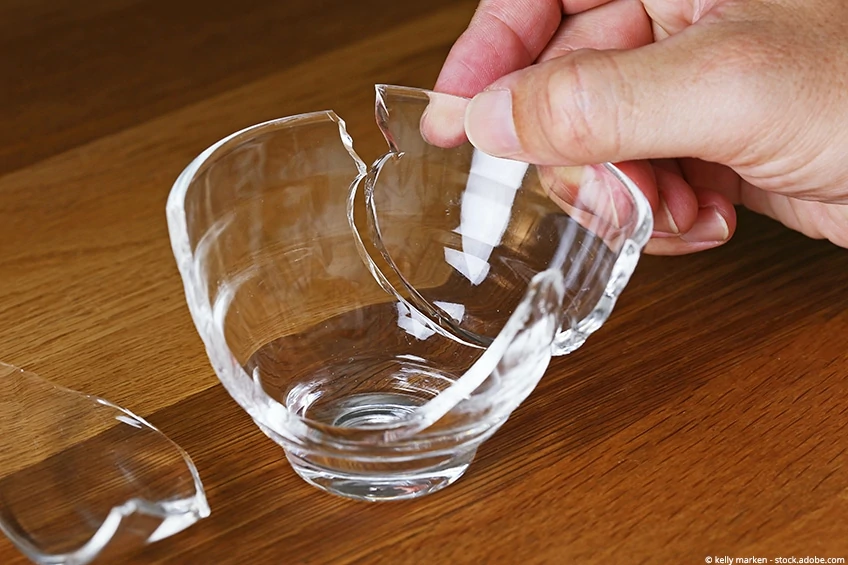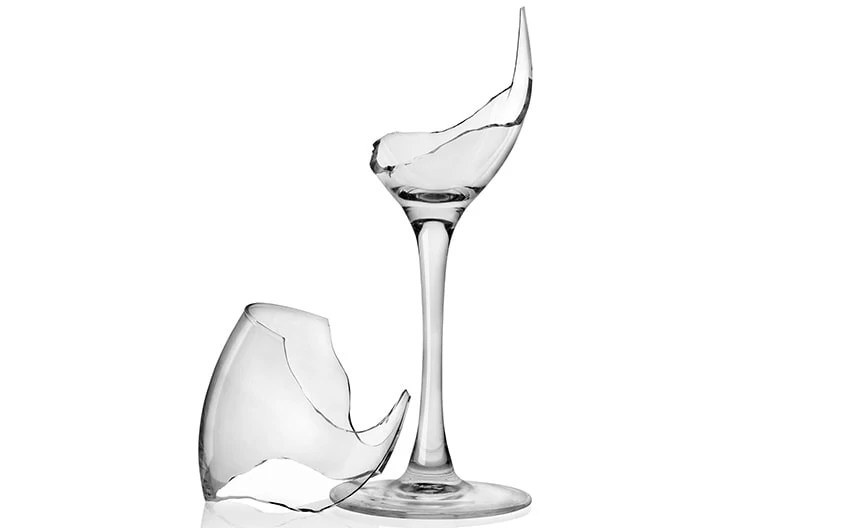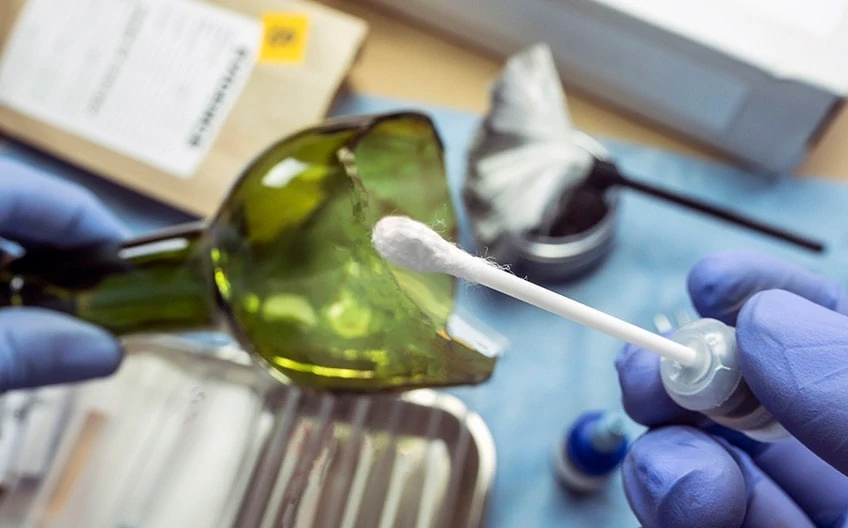Best Glue for Glass – Find the Right Glass Glue for Your Repair
This post may contain affiliate links. We may earn a small commission from purchases made through them, at no additional cost to you. You help to support resin-expert.com
One careless moment is enough, and your favorite glass piece is gone. Then the question quickly arises: How can glass be glued? With our glass glue tips, we show you not only how to repair your favorite piece of glass, but also how to fix glass to metal and which glass glue is suitable for which application.
Table of Contents
What Is Glass Glue?
Glass glue is an adhesive with which glass can be joined together. Many adhesives need a rough surface to develop their adhesive properties fully. This is not the case with glass adhesive. This adhesive is, therefore, ideally suited for bonding glass – which has a very smooth surface structure. With its help, it is not only possible to bond glass surfaces together; you can even glue glass to wood or metal.
Which adhesive you need exactly depends on the type of application and the material to be bonded. For example, if you want to glue glass to glass, you will need a different adhesive than if you wish to glue glass to metal. For surfaces that come into contact with food, you should use a different glass adhesive than for those that remain food-free.
It is difficult to make precise statements about the processing of each glass adhesive. The best way to do this is to study the datasheet supplied by the manufacturer. In general, however, we can tell you which types of glass adhesive are suitable for which requirements.
Choosing the Best Glue for Glass
There are many different types of glass glue. In the following, we will list the most common glass adhesives together with their possible applications and tell you what you need to pay attention to.
- Silicone: Silicone is ideal for a wide range of applications, such as bonding terrariums and aquariums. Silicone is also the preferred adhesive for construction work because it is durable and easy to use. The disadvantage is that it is not transparent. However, it is waterproof, very durable, elastic, and has an incredibly strong adhesive effect.
- Best for sealing gaps or cracks between two surfaces; Works on window, door, kitchen, bath, gutters, auto, marine and more
- Indoor/outdoor; 100% Waterproof
- Won't Yellow, shrink or crack, dries translucent clear
- Mold and Mildew resistant
Heat-resistant silicone, also known as high-temperature silicone, is suitable for repairing oven or fireplace fronts.
If you want to use the silicone adhesive on a terrarium or aquarium, you must make sure it is suitable. Sanitary silicone, in particular, often has an antifungal effect of preventing mold growth in the bathroom. This is evidently a great advantage when used in damp rooms, but fungicides are harmful to animals and water organisms. Special silicones are available for such applications.
- UV-Adhesive: UV-adhesive is available as high or low viscosity adhesive. This makes it ideally suited to all areas of application. It means that not only large-area bonding is possible, but also delicate and filigree detail work. Furthermore, UV Glass Adhesive is heat-resistant up to a relatively high temperature and very water-resistant. This glass adhesive is mainly used for furniture assembly and clear glass repair. Even if you want to glue metal to glass, the UV adhesive will serve you well.
- When fully cured, Bondic is 100% waterproof, heat-resistant, and non toxic. Dries clear and can be sanded or painted after it hardens to customize any project
- Bondic is not glue and the no solvent liquid formula only hardens when UV light is applied which prevents the hassle of removing hardened glue and means there is no chance of it drying up in the container
- Use Bondic on plastic, wood, metal, PVC, steel, rubber, wiring, ceramic, figurines, vinyl, Kevlar, polypropylene, leather and so much more
After application, it cures using UV light; this can be either sunlight or artificial light.
- Food-Safe Glass Adhesives: A UV adhesive is suitable for use as a food-safe glass adhesive. Of course, this should not release any toxic substances into the environment. As a rule, food-safe glass adhesives are not only non-toxic, but also heat-resistant in a range from about -50° Celsius to about 120° Celsius, dishwasher-safe and very resistant to fats, oils, and weak alkalis. An excellent product ist Loctite glass glue.
- Only patented super glue specially formulated for bonding glass
- Dries Crystal Clear and is dishwasher safe
- Water-resistant bond to stand up to everyday use
- Superglue: There are also superglues on the market that allow you to glue glass to glass. However, these should not be your first choice, as they are not suitable for repairing high-priced items in particular, as they are difficult to remove when dry. In case of doubt, you should therefore look to use another high-quality glass adhesive.
- No-run control gel formula that is great for use on vertical surfaces
- Versatile glue with an anti-clog cap to prevent it from drying out
- Specially formulated for increased impact resistance and strength
- Epoxy Adhesive: Epoxy adhesive is a two-component adhesive that only begins to cure when the resin is mixed with the hardener. Then the so-called pot life begins, during which the adhesive can be processed. The 2-component adhesive is often supplied in a practical double-chamber cartridge so that the user does not have to go through the tedious mixing process.
- Strong, permanent, fast, and gap-filling epoxy glue
- Cures quickly, dries, clear, and is great for multi-surface application
- For tough repairs requiring a durable bond and solvent resistance
Epoxy adhesive can be applied to many different materials, such as stone, various plastics, and also glass and metals. It should be noted that two-component reactive adhesives are often not suitable for bonding large glass surfaces.
- PU Adhesives: Polyurethane adhesives are ideal for a wide range of applications. They are available both as 1-component and as 2-component adhesives. They are used for bonding large areas as well as for smaller bonding. As with epoxy adhesives, PU adhesives can be mixed with various additives to cause different reactions; for example, accelerators can be added as well as inhibitors to extend the pot life. Fillers and colorants can also be added to the PU adhesives.
- Incredibly strong and versatile glue can be used on many surfaces
- Best for tough repairs on dissimilar surfaces, both indoors and out
- 100% waterproof and will withstand exposure to outdoor elements
What Can Be Repaired and Glued with Glass Glue?
If you are a skilled do-it-yourselfer, you can also repair high-priced items using glass glue. For example, it is possible to fix:
- Cracks in your oven, display case or fireplace door
- a cracked exterior mirror on your vehicle
- broken glasses
- cracked terrariums or aquariums
- Glass jewelry and vases
- Cracks in window panes
Glass adhesives are often solvent-free, UV and weather-resistant and have a very high resistance to mechanical stress.
Tutorial for Gluing Glass
Preparation of the Glass Surface
How can you glue glass? We will now tell you in detail. Just follow our instructions for glass bonding, then hardly anything can go wrong. For the sake of simplicity, we describe below how to glue fragments of a damaged glass – in other words, we explain how you can glue glass to glass.
The very first step, even before gluing the glass surfaces, must be to check the existing fragments. Once a crystal glass is shattered into a thousand tiny shards, the best glass glue will most likely be of little use to you. However, if you want to glue a few large shards together, first collect them in a container and put them together once on a trial basis. When all the fragments are present, you can start cleaning the surfaces to be glued.
The surfaces must be not only clean but also free of grease. Therefore, clean them first with warm soapy water and then again with acetone or spirit. Do not touch the areas to be bonded with your bare fingers afterward, otherwise the skin’s own grease film will be deposited on them, and you will have to clean the areas again. Dirt and grease can negatively affect the adhesive properties of the glue.
Use gloves for gluing, preferably those with latex. Let the surfaces dry well before applying the adhesive.
The Actual Bonding of Glass
Now you can apply the adhesive. Take care not to use too much of the glass adhesive to the surface, so that not too much of it will leak out at the sides when you join them together. Usually, it is sufficient to apply the glass adhesive to one side; whether this is the case with your glue, you should read the instructions.
After applying the adhesive, the fragments are put together and fixed as long as possible until the glue has dried. You can use adhesive tape, rubberized clamps, or other aids for this purpose. For UV adhesive, you can use a special UV lamp. Alternatively, place the assembled parts in sunlight.
How long the adhesive takes to cure cannot be generally predicted. It depends on the adhesive, the ambient temperature, and the materials being bonded. However, you can find the drying time in the enclosed datasheet from the manufacturer. Stick to the rule: Better too long than too short. Give the material time.
Remove Adhesive Residues
Any adhesive residue that is still moist is best removed immediately by wiping it off very carefully with a kitchen paper or newspaper. Use the same method to clean the thread of the tube cap of your adhesive so that the cap does not stick there, and you can easily open it the next time you use it. Also, clean your workplace immediately.
If you want to remove the dried remains of the glass glue after work is done, you can use either a standard oven scraper, a scalpel or a razor blade. Use it to scrape the adhesive residue off the surface carefully. Afterward, you only have to clean the glass thoroughly once more.
Glue Glass to Wood
If you want to glue glass to wood, you must observe the following: While glass has a smooth surface structure, wood is a highly porous material that is quickly saturated by liquids.
Clear glass is a particular challenge for the craftsman, as it usually has a different refraction of light than the adhesive, even if the latter is transparent. So if you want to glue clear glass to wood, you should use a special mirror glue. Apply the adhesive carefully and watch out for bubbles or streaks. This must be avoided at all costs, as every smallest bubble will be visible on the clear glass.
To conceal the different refraction of light between the adhesive and the clear glass, you can paint one side of the glass before gluing the glass to wood.
When working with glass and wood, it must be ensured that the wooden substrate is completely dry and dust-free, otherwise the adhesive properties of the glass adhesive are massively impaired.
Best Glue for Glass to Metal
If you want to glue metal on glass, there are several things you should consider, because this application area is not so easy to handle. First of all, the dimensions of the parts to be bonded are of great importance. Right after this comes the temperature application range: What is the purpose of the part to be bonded? Glass has an entirely different coefficient of thermal expansion than metal. This means that both materials contract or expand differently under the influence of heat or cold. If you glue metal to glass, you must take this fact into account.
A UV adhesive is only suitable for this purpose if the surfaces to be bonded are no larger than the palm of your hand. Otherwise, the surfaces to be bonded often cannot withstand high mechanical stress.
If you want to bond large surfaces together, it is better to use a flexible glass adhesive such as PU adhesive or silicone. Please note that for optimum adhesion of the PU adhesive, you must first apply a silane-containing primer.
Tips and Tricks for Gluing Glass
When working with sharp-edged glass, there is, of course, a risk of injury. Protect your fingers from sharp edges by masking them with a layer of medical tape. In this way, you can preserve your haptic abilities without exposing your skin to dangerous fragments.
As an additional protection against the ingredients of the glass adhesive, you can put on skin-tight gloves; these are also ideal for protecting the areas to be bonded from finger grease if you do not want to use tape.
Care should also be taken of the vapors that are produced – for your safety, make sure the workplace is well ventilated.
Remember also to protect your working environment from excess adhesive. Lay out newspaper or foil to collect adhesive residue. Once the glue has cured, it will be even more challenging to remove it from a tabletop.
Superglue or hot melt adhesives are not suitable for bonding glass to glass in a durable manner. However, if you only intend to use it for a short period of time, for example, for seasonal decoration, you can use a hot glue gun. However, only the types of adhesives mentioned above are suitable for really durable applications.
In order to avoid moisture formation on the surfaces to be bonded, you should ensure a uniform ambient temperature. Before working, you can warm the glass to room temperature, otherwise condensation may form. This can impair the curing process of the glass adhesive.
If the glass to be bonded is coated, you should test whether your adhesive will dissolve the coating before bonding. This is particularly important with Plexiglas.
Gluing glass is therefore not only a professional job, but also child’s play for every do-it-yourselfer. It only depends on the use of the right glass adhesive. We hope we could help you to choose the right glass adhesive!










